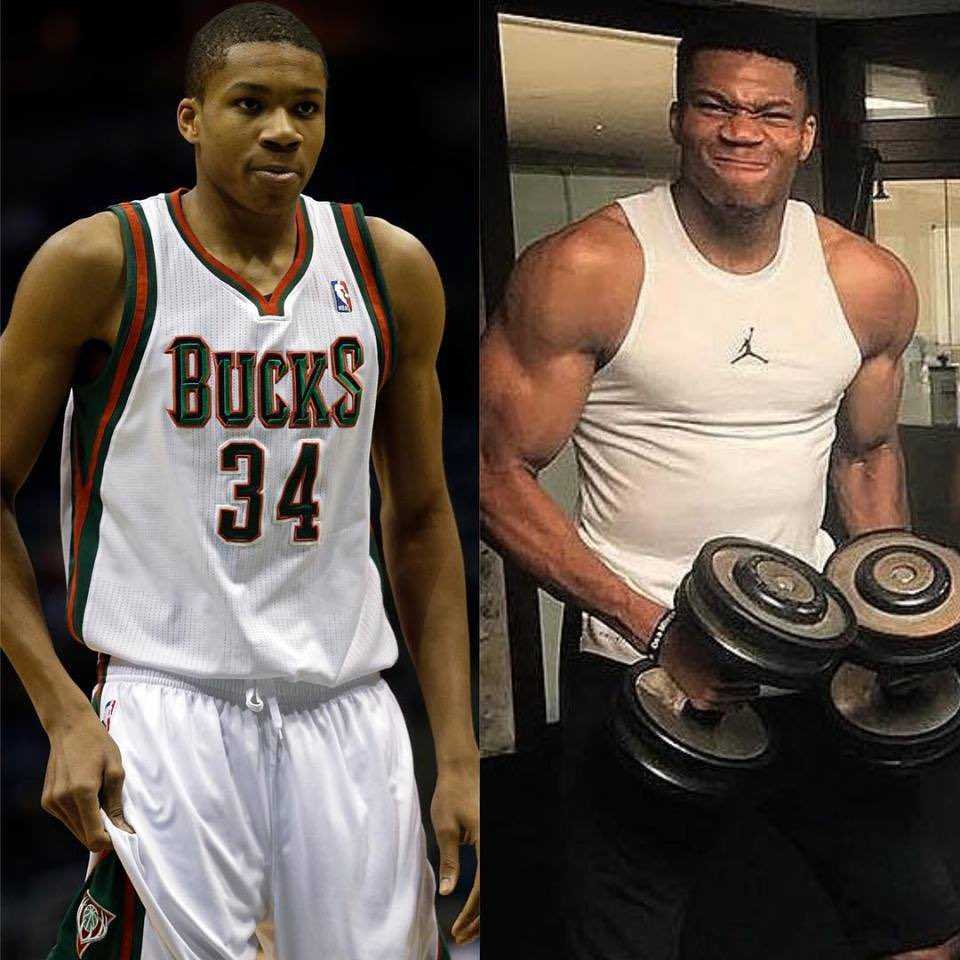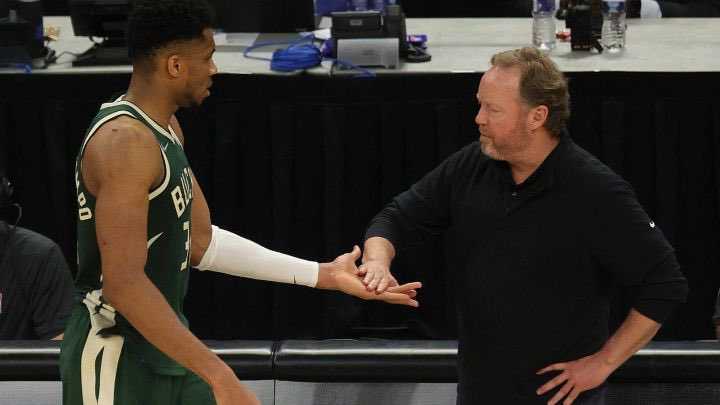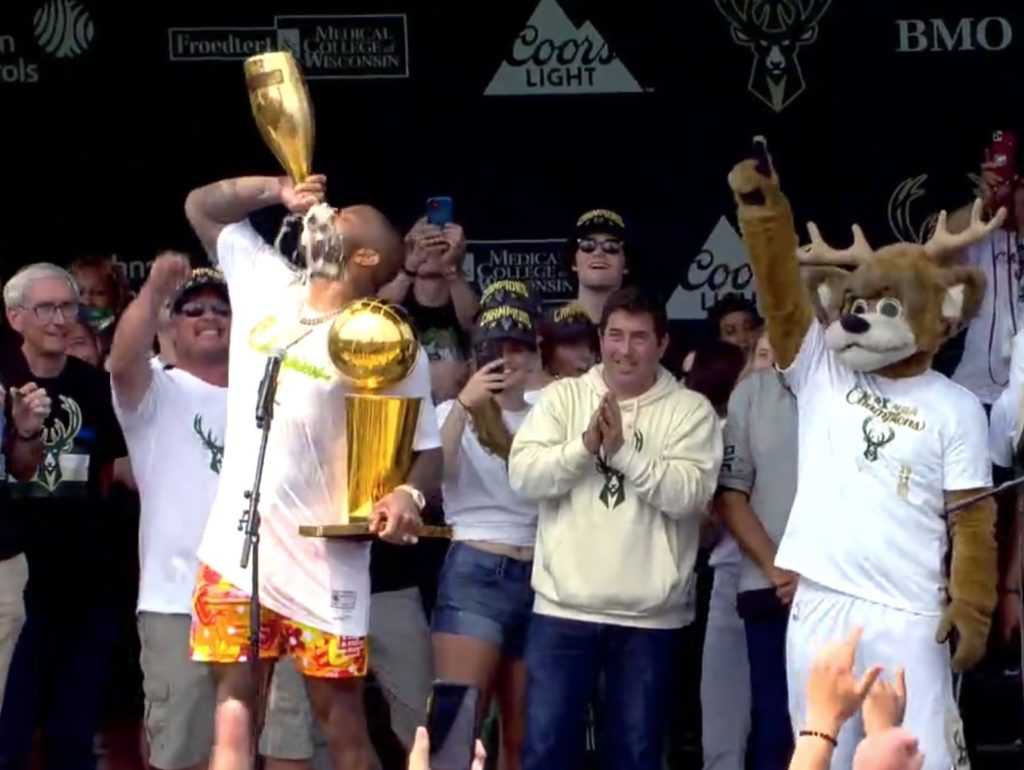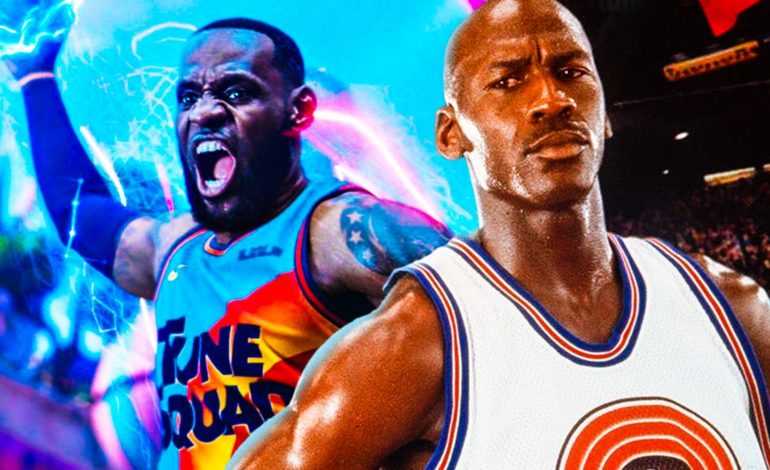As the confetti settles in Milwaukee, Giannis Antetokounmpo and the Bucks represent mid-sized markets everywhere atop the NBA. Rightly or wrongly, the Bucks represent the antithesis of the fans’ issues with the game. They’re not a superteam that signed a handful of All-Stars, they’re not a major city on either coast, and they kept their developed superstar in town with a contract extension last off-season. The Milwaukee Bucks represent hope for the markets like Memphis, New Orleans, and Denver. Milwaukee drafted Antetokounmpo as a project, developed him, surrounded him with the right pieces, and built a champion. Memphis and Ja Morant, New Orleans and Zion Williamson, Dallas and Luka Doncic, and Denver and Nikola Jokic all hope to achieve the same.
But is it repeatable? In the NBA Finals, Giannis Antetokounmpo averaged 35.2 points, 13.2 rebounds, and 5 assists. In a six-game series, he broke the 40 points and 10 rebound barrier three times. And he did all of this in the same month his knee bent backward in the Eastern Conference Finals. Yes, every small market team wakes up wanting to be Milwaukee. But can they?
There is just one Giannis Antetokounmpo. But there are several lessons the Milwaukee Bucks franchise offers for the smaller marketplaces
Trust the Development

The Philadelphia 76ers were the first to coin “trust the process,” but in Milwaukee that trope actually applied. Philadelphia’s process was obsessively tanking for draft capital and better shots at prospects. Where Milwaukee differed was in their process- patiently developing the talent.
In 2013, Giannis Antetokounmpo was a skinny and long forward who worked relentlessly hard. In 2012, Khris Middleton was a six-foot-seven forward who didn’t average more than 15 points or get past the second round of the NCAA Tournament in three years at Texas A & M. And in 2018, Brook Lopez was a 30-year-old Center with one All-Star appearance five seasons earlier and had been a rotational player on a pair of bad teams in the 2016-17 and 2017-18 seasons. As they parade through Milwaukee in 2021, the development of all three played their own role in hoisting the Larry O’Brien trophy.
Antetokounmpo developed into a two-time MVP, Defensive Player of the Year, and NBA Finals MVP. Khris Middleton went from a rotational player on the Pistons’ G League affiliate to a two-time All-Star. Lopez’s mid-career transformation into “Splash Mountain” was instrumental in spacing the floor and maximizing Antetokounmpo’s game.
The Milwaukee Bucks didn’t have to look like this. They thought they had turned their franchise around when they drafted Jabari Parker in 2014. When Milwaukee traded for Middleton, he was a “throw-in” in the Brandon Knight trade to even out the money. Brook Lopez wasn’t even the most coveted Bucks big man signed in the summer of 2018; they signed Ersan Ilyasova to a three-year $21 Million deal within days of signing Lopez to a 1year $3.3 Million one.
In each instance, for a variety of reasons, the “coveted” player (Parker, Knight, and Ilyasova) ended up not being as good a fit as the “other” one (Antetokounmpo, Middleton, and Lopez). Instead of digging their heels in on Parker, Knight, and Ilyasova, the Milwaukee Bucks trusted their development of the latter group of guys.
Teams regularly stick with “their guy” to the detriment of the other. It helps GMs validate their draft pick, the contract they offered, or the decision they made. Milwaukee’s current championship was built on the other options. That admittedly takes courage; it means the franchise has to be open to admitting their initial thoughts were the correct ones. But Milwaukee saw the development of each of those players through, and they became the better options.
When You Think You’re Right, Stay There

Since the spring of 2018 and the Milwaukee Bucks loss to the Boston Celtics in the first round, many thought Milwaukee needed to blow it up. Antetokounmpo led all scorers in three of the seven games, but the loss to a younger Boston marred the resume.
Suddenly, Antetokoumpo needed a new position. Head coach Jason Kidd had attempted to move the Greek Freak to Point Guard to maximize his playmaking, but his lack of a jump shot had analysts thinking he needed to be in the dunker spot. Khris Middleton made difficult shots, but if he couldn’t make separation many thought he was an ill fit. Boston was younger, played better, and Milwaukee was behind the eightball.
Milwaukee didn’t “blow it up” in any dramatic sense. They made a coaching change and hired the recently released Mike Budenholzer from Atlanta. Budenholzer’s Hawks had also fallen short earlier in the 2010’s but were consistently at the top of the league. In his first regular-season the Bucks were unsurprisingly also at top of the NBA. Yes they lost in the Eastern Conference Finals that season, yes they lost in the second round in the Bubble after a similar year, and yes this year was a playoff filled with injured stars. But the Milwaukee Bucks committed to spending years consistently “in the mix,” and eventually those dice came up in their favor.
Regularly, NBA Teams take that swing, miss, and overcorrect. After two years in Milwaukee, many called for Coach Bud’s job. Everyone thought Giannis Antetokounmpo was leaving for greener pastures. Restarting the Milwaukee Bucks project made a ton of sense, if not totally stripping it down. Milwaukee managed to stay pat. Yes, that hinged on the Antetokounmpo extension, but the Bucks functioned as if he always was. They didn’t (publicly) entertain a bunch of offers for their pieces, they knew their pieces were good.
Carpe Diem

The Milwaukee Bucks trusted their development and didn’t sway from their stars. However, the Bucks did add the right pieces to their roster and push all of their chips to the center. Milwaukee’s “special sauce” was the tough defense they got out of Jrue Holiday and PJ Tucker along their playoff run. Holiday and Tucker regularly were assigned the opposition’s best players and brought what Tucker called “dog” mindset to the roster.
But they weren’t “cheap.”
Holiday was acquired in a four-team trade where the Bucks sent away Eric Bledsoe, George Hill, three total first-round picks, and four pick swaps. PJ Tucker, after stepping away from the Rockets and demanding a trade from the rebuilding franchise, was traded for Bucks backup Point Guard DJ Augustin, DJ Wilson, and a first-round pick this year. The Bucks mortgaged their future, and some depth, for the here and now. Without blowing up their identity, Milwaukee added to it.
Many NBA franchises are hesitant to pull the trigger on the here and now. Draft capital and young development projects are enticing, but they kick the can down the road. Not unlike the Toronto Raptors trading for one year of Kawhi Leonard or the Lakers shipped off the future of the franchise for Anthony Davis, Milwaukee decided this is the year to make a run. And then they did. And then it worked.
It’s not that it works out every time. Houston went all in to re-sign Chris Paul, then all in on trading him. The Celtics thought the missing piece for their young team of stars was Kyrie Irving. Minnesota and Philadelphia both brought in Jimmy Butler and didn’t get over the hump. But the lesson is simple: to win the day, you have to try and seize it first. Had Paul not injured his hamstring, or Irving had to miss the playoffs, or the Game 7 Leonard shot bounced slightly differently each of those moves may have landed differently. But it can’t work if you don’t go for it. And the Bucks went for it.
Every team hopes their mid-first round pick turns into a generational talent, or that their franchise’s “cornerstone” is really a “cornerstone.” But winning a championship in the NBA requires more than that. The Milwaukee Bucks laid out a blueprint. Will anyone follow it?






